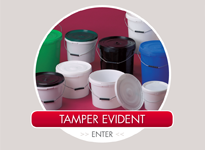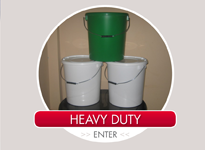

Plastic jerry cans for fuel containers
May 16, 2014 at 8:41 AM
As you’ll see from our home page, at H & O we are proud to both manufacture and distribute moulded jerry cans. However, we thought you might be interested to know a little of the history of these intriguing containers, and also – if you are looking to use them for petrol – give you some important advice around the law in the safe storage and transportation of fuel.
 Firstly then, a history lesson. Jerry cans are rather an old-fashioned storage device, originally made from pressed steel for military purposes, in 1930’s Germany (hence their nickname here in the UK, based on our name for the German troops). They originally held 20 litres of fuel – much more than had been previously held in previous containers - although our own range comes in a variety of sizes.
Firstly then, a history lesson. Jerry cans are rather an old-fashioned storage device, originally made from pressed steel for military purposes, in 1930’s Germany (hence their nickname here in the UK, based on our name for the German troops). They originally held 20 litres of fuel – much more than had been previously held in previous containers - although our own range comes in a variety of sizes.
A common usage is to keep a spare jerry can in the car, in case you run out of petrol and can get back to a petrol station. However, the law over storage and transportation of fuel is rather vague; in fact, rules around storing petrol even predate the jerry can itself, stretching back to the 1920s. The AA argue, for instance, that they are "desperately worried" about people storing petrol and diesel. They quite correctly describe the storage of fuel as "incredibly, incredibly dangerous”, continuing that “people shouldn't even contemplate storing it at all". Equally, if you're stopped by the police, they may consider the transportation of fuel in jerry cans to form a “dangerous” or “hazardous” load.
Storing petrol in jerry cans
At home, you need take even more care. The extreme weather of the 2013 winter lead some householders to store, and use, petrol within the home. As petrol is extremely flammable this had sometime tragic consequences. It's not actually illegal to store petrol within the home, but there are some very definite limits, which you would do well to jot down.
The Health & Safety Executive detail you can legally store 30 litres of petrol. However, there are strict rules about how, and where, to store it. As above, the traditional, old-fashioned jerry is a 20 litre container, however it is now illegal to store 20 litres of fuel in just one container. The only legal containers for storage are the metal 10-litre… and the plastic five-litre plastic cans supplied by H & O. So if you want to store the full 30 litre allowance, you will need to do so across a number of containers: for instance two 10-litres, and a further two five-litres. H & O actually manufacture their jerry cans from high molecular weight HD, in a wide range of sizes, so we will certainly be able to supply you with the jerry can you need.
Equally, not only must the petrol be stored in the right quantities, it must also be stored in the right place. This must be outside of the home itself - but no more than six metres away - perhaps in an exterior building such as a garage or a shed. You certainly don’t want to mix fuels with water for instance, so H & O can also provide jerry cans in blue and black, so that you can colour code their contents.
So, there is much to consider when it comes to storing and transporting fuel. The humble jerry can has changed a great deal since the 1930s. However, the explosive potential of fuel has not…
Add Pingback















